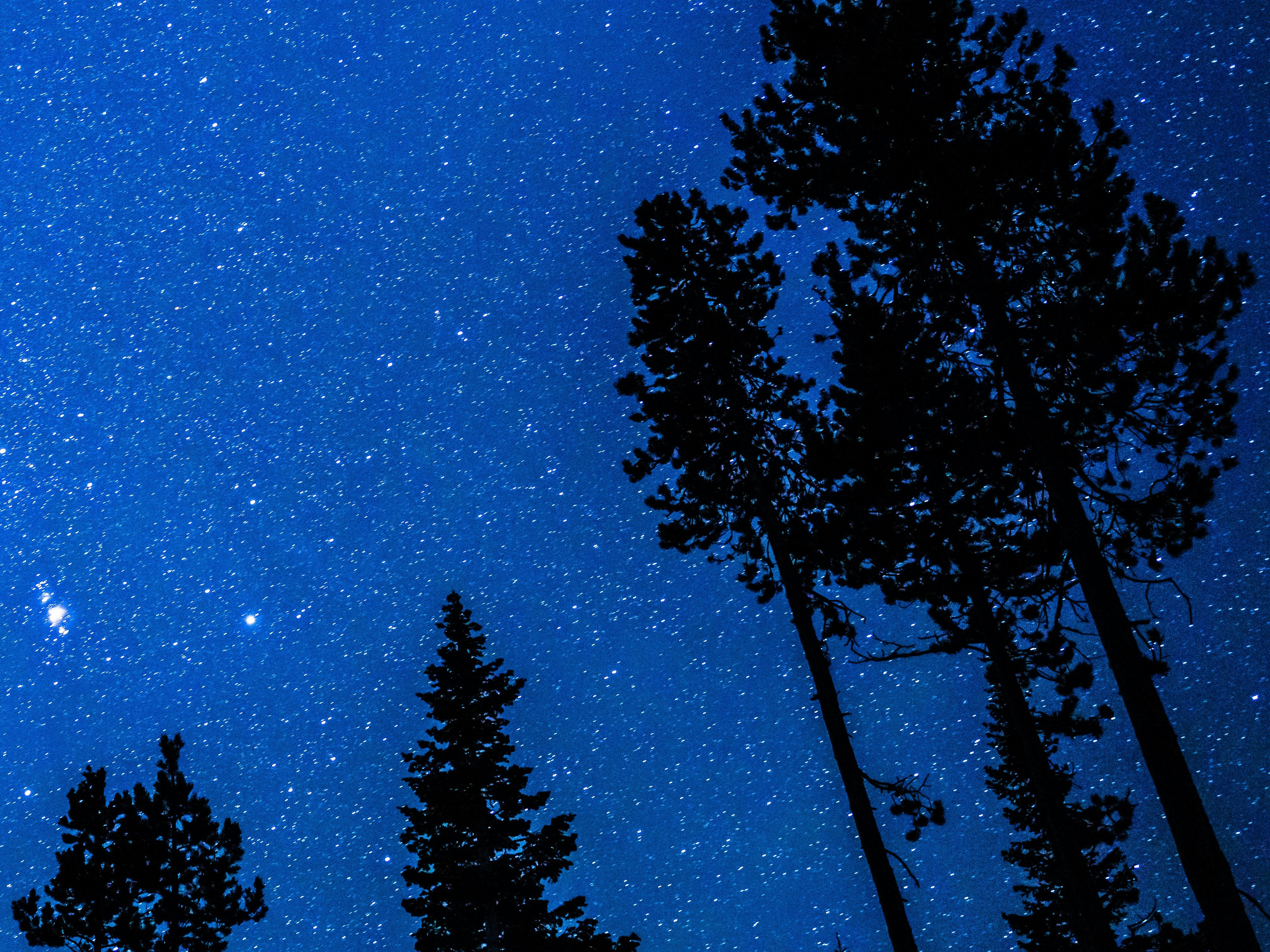
Curator’s statement
Imagine standing beneath a sky so clear and dark that the Milky Way stretches out before you, a glittering river of stars. This is the awe-inspiring experience that awaits you at Oregon's Dark Sky Sanctuary. Nestled in the untouched wilderness of Central and Eastern Oregon, this sanctuary offers a celestial haven for astronomers, astrophotographers and night-sky enthusiasts. Free from the blight of light pollution, it provides an unparalleled opportunity to reconnect with the cosmos and witness the universe in its most pristine form. Whether you're an avid stargazer or simply someone looking to marvel at the beauty of the night sky, Oregon's Dark Sky Sanctuary is a destination like no other. From guided night tours and astrophotography workshops to serene camping experiences under a canopy of stars, there's something here for everyone. Join us as we explore what makes this sanctuary a must-visit for travelers seeking a truly out-of-this-world adventure.
The Fora Difference
Book with Marc to access exclusive perks and experiences on your trip.
Killer perks
Free upgrades, spa credits and more—we got you
Personalized recs
Customized travel planning for your style
Insider knowledge
Expert advice from people who’ve actually been there
Where to stay in Oregon
Unlock perks by contacting Marc to book your trip.
Things to do in Oregon

What is a Dark Sky sanctuary?
A Dark Sky Sanctuary is a designation given by the International Dark Sky Association (IDA) to locations that offer exceptional starry nights and a nocturnal environment protected from light pollution. Oregon's sanctuary is one of only a handful worldwide, making it a rare and precious destination for stargazing enthusiasts.
Location & accessibility
The Dark Sky Sanctuary is located in the remote areas of Central and Eastern Oregon. While this means you'll need to venture off the beaten path, the journey is well worth it. The nearest towns are Prineville and John Day, where you can find accommodations and amenities before heading into the sanctuary.
Best time to visit
The best time to visit the Dark Sky Sanctuary is during the new moon phase, when the sky is at its darkest. This typically falls in the middle of the lunar cycle. Summer and early fall are ideal seasons due to milder weather and clear skies. However, winter visits can also be magical, with the chance to see the Milky Way framed by snow-covered landscapes.
Stargazing experiences
Guided night tours: Several local organizations and tour operators offer guided stargazing tours. These tours provide high-powered telescopes and knowledgeable guides who can point out constellations, planets and distant galaxies.
Astrophotography workshops: For photographers, the sanctuary offers unparalleled opportunities to capture the night sky. Workshops and guided sessions help both amateur and professional photographers perfect their skills in astrophotography.
Star parties: Throughout the year, star parties are organized, where stargazers gather to share their passions. These events often feature guest speakers, special equipment, and a communal atmosphere.
Unique attractions
Ochoco National Forest: Surrounding the sanctuary, this national forest offers hiking trails, wildlife viewing and camping options. Daytime adventures here can be as rewarding as nighttime stargazing.
John Day Fossil Beds: Just a short drive away, this national monument offers a fascinating glimpse into the ancient past with its well-preserved fossils and striking Painted Hills.
Prineville Reservoir State Park: Perfect for daytime relaxation, this park offers boating, fishing and hiking opportunities, making it a great addition to your stargazing trip.
Where to stay
For accommodations, consider staying in Prineville or John Day. Both towns offer a range of options, from quaint bed and breakfasts to comfortable motels. If you prefer a more immersive experience, camping within the sanctuary or in the surrounding forests can provide a unique and uninterrupted connection to the night sky.
Practical tips for visitors
Bring warm clothing: Even in summer, nighttime temperatures can drop significantly. Dress in layers to stay comfortable.
Use red lights: To preserve night vision, use red LED lights instead of white ones. This helps minimize light pollution and allows your eyes to adjust to the darkness.
Check weather conditions: Clear skies are essential for stargazing. Check the local weather forecast before planning your visit.
Respect the environment: As a protected area, it's crucial to follow Leave No Trace principles to maintain the sanctuary's pristine condition.
Final thoughts
Oregon's Dark Sky Sanctuary is a hidden gem for travelers seeking an awe-inspiring encounter with the cosmos. Whether you're an avid astronomer, a budding astrophotographer, or simply someone who marvels at the beauty of the night sky, this sanctuary offers an experience like no other. So pack your telescope, camera and sense of wonder, and embark on a journey to one of the darkest places on Earth where the stars shine the brightest.
Places to eat & drink in Oregon

Country restaurants near Oregon's Dark Sky Sanctuary
Cowboy Dinner Tree: Silver Lake, this rustic restaurant is famed for its hearty portions of steak and chicken, offering a true taste of the Old West in a cozy, log cabin setting.
Big Springs Tavern: Situated in Paisley, this charming tavern serves up delicious, home-cooked meals with locally sourced ingredients, making it a favorite among both locals and visitors.
Snaffle Bit Dinner House: Found in John Day, this family-run restaurant provides a welcoming atmosphere and specializes in classic American comfort food, perfect for refueling after a day of exploring.
Need to know
Interested in exploring other Dark Sky reserves around the world?
Aoraki Mackenzie, New Zealand: Located in the heart of New Zealand’s South Island, Aoraki Mackenzie Dark Sky Reserve is one of the largest in the world.
NamibRand Nature Reserve, Namibia: Namibia’s NamibRand Nature Reserve is a place where the night sky seems to stretch endlessly, unmarred by artificial light.
Rhön Biosphere Reserve, Germany: In the heart of Germany, the Rhön Biosphere Reserve is a hidden gem for stargazing in Europe.
Gabriela Mistral, Chile: Chile’s Gabriela Mistral Dark Sky Sanctuary is renowned for its crystal-clear skies, thanks to its high altitude and low humidity. Located in the Atacama Desert, this sanctuary is a dream destination for astronomers worldwide.
Cosmic Campground, USA: Situated in New Mexico, the Cosmic Campground is the first International Dark Sky Sanctuary in the Northern Hemisphere.

Travel Advisor
Marc Scholnick

Get in touch with Marc
Did you like this guide? Reach out to customize and book your own experience. Or, just to chat about travel in general.
You can normally expect a response from Marc within a business day or so. You’ll also be subscribed to our travel newsletter (you can unsubscribe at any time).
This guide is a part of our ongoing series on travel to Oregon. Looking for more travel inspiration? Check out my guide, 10 Days in Peru: Can You Handle This Much Adventure and Culture?